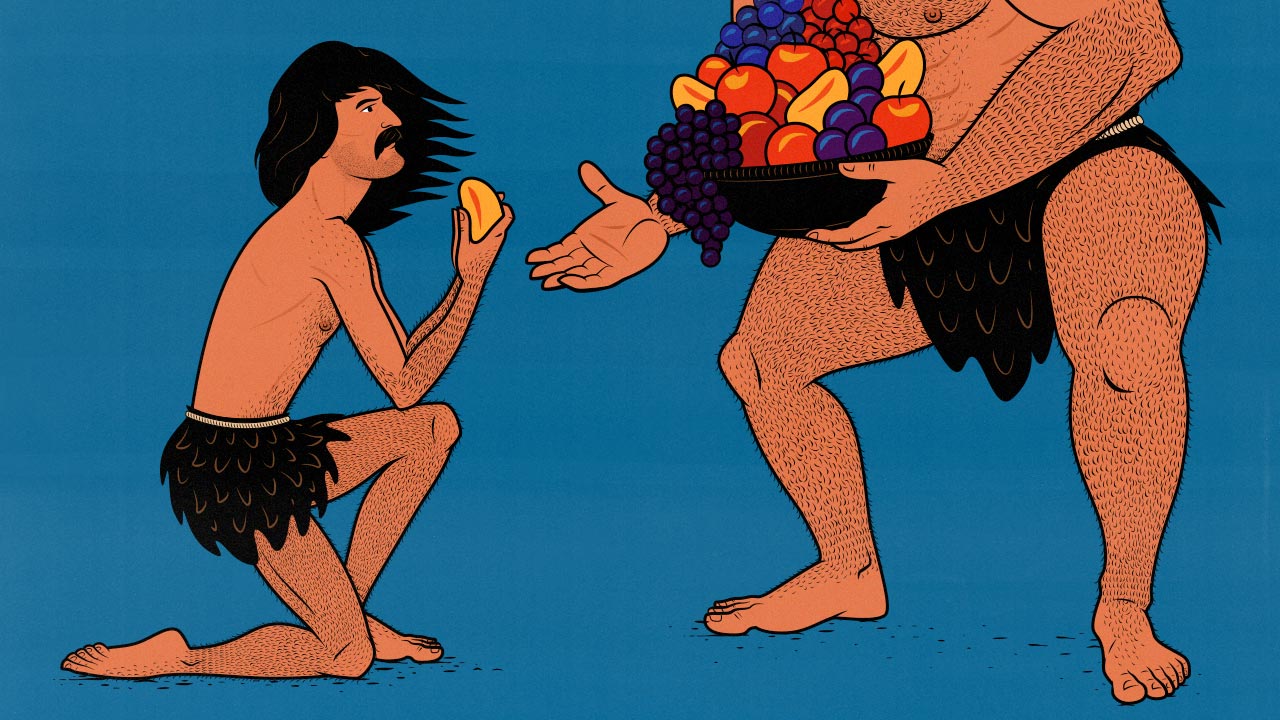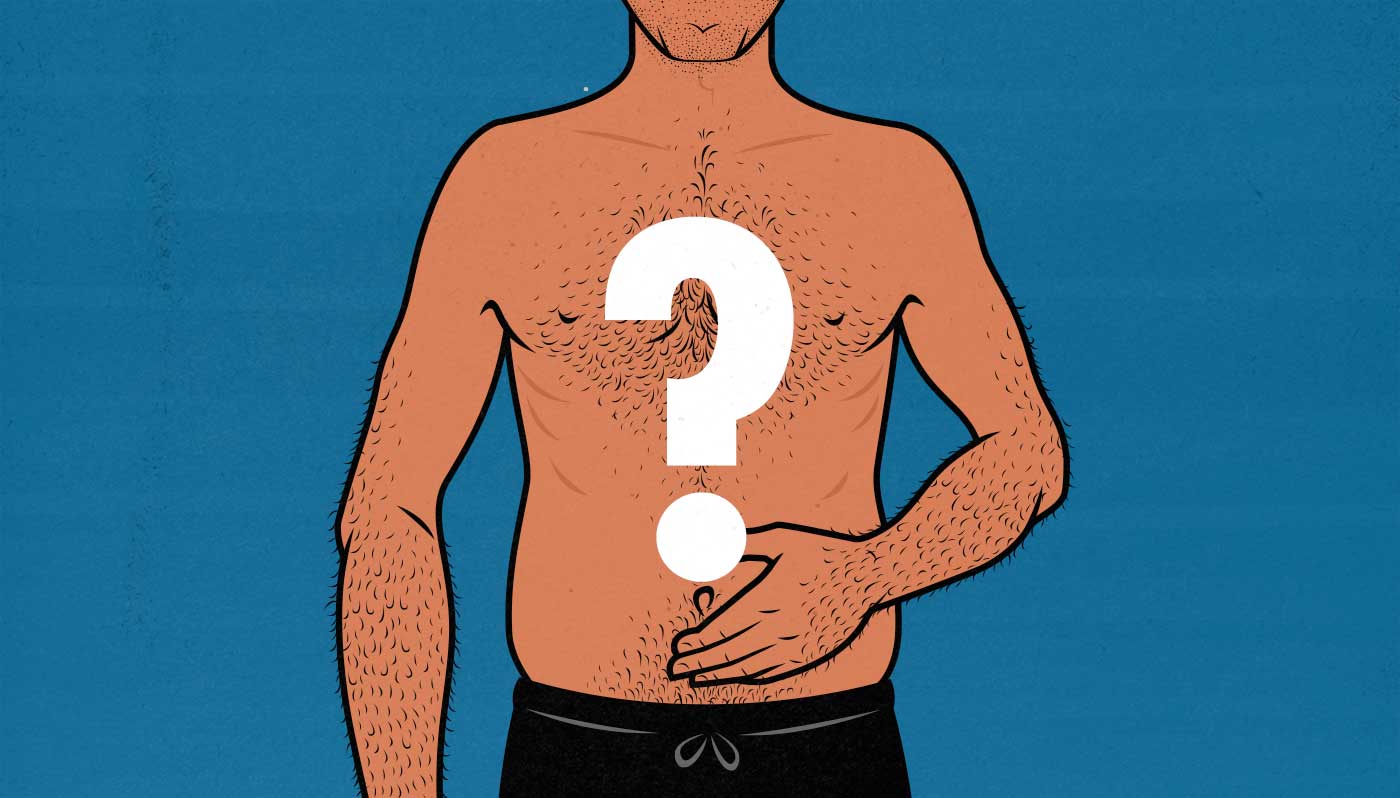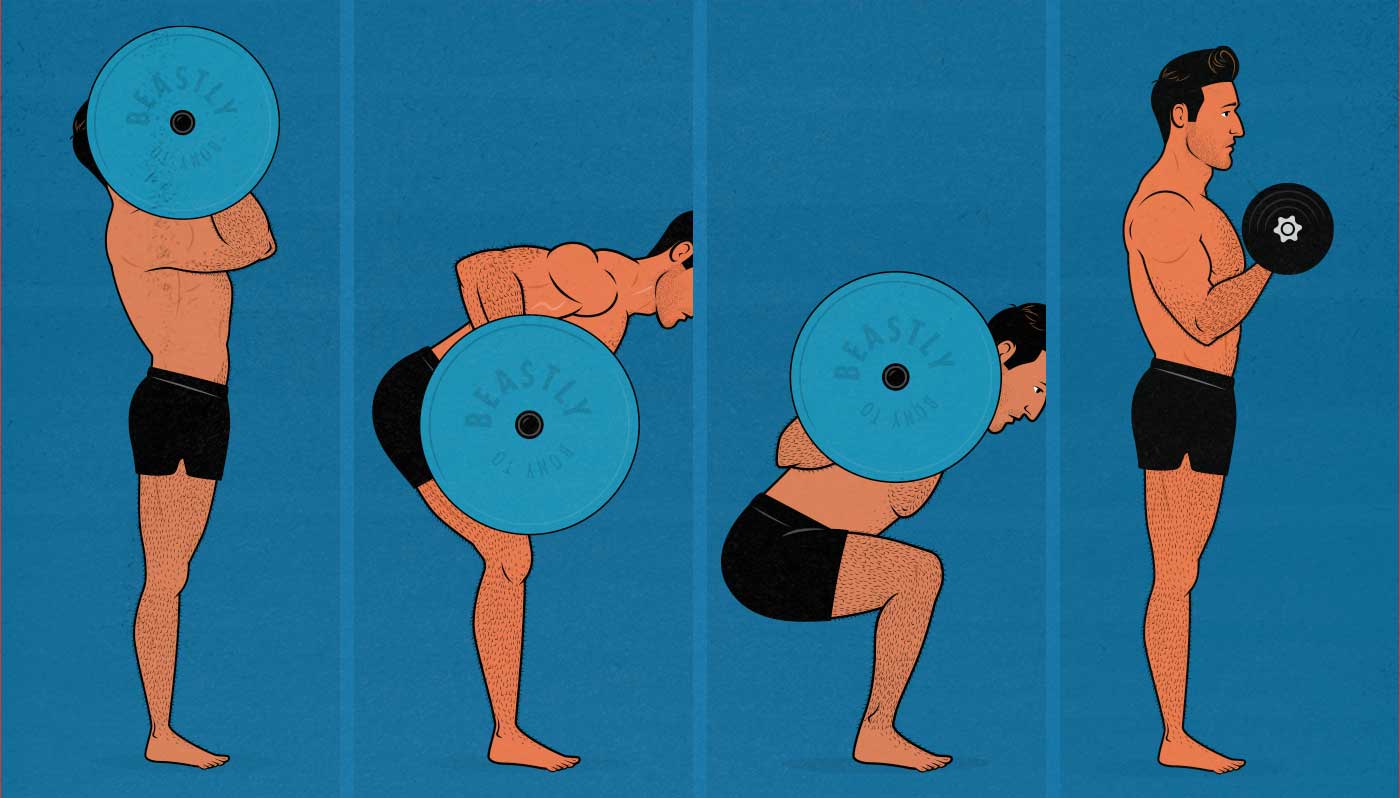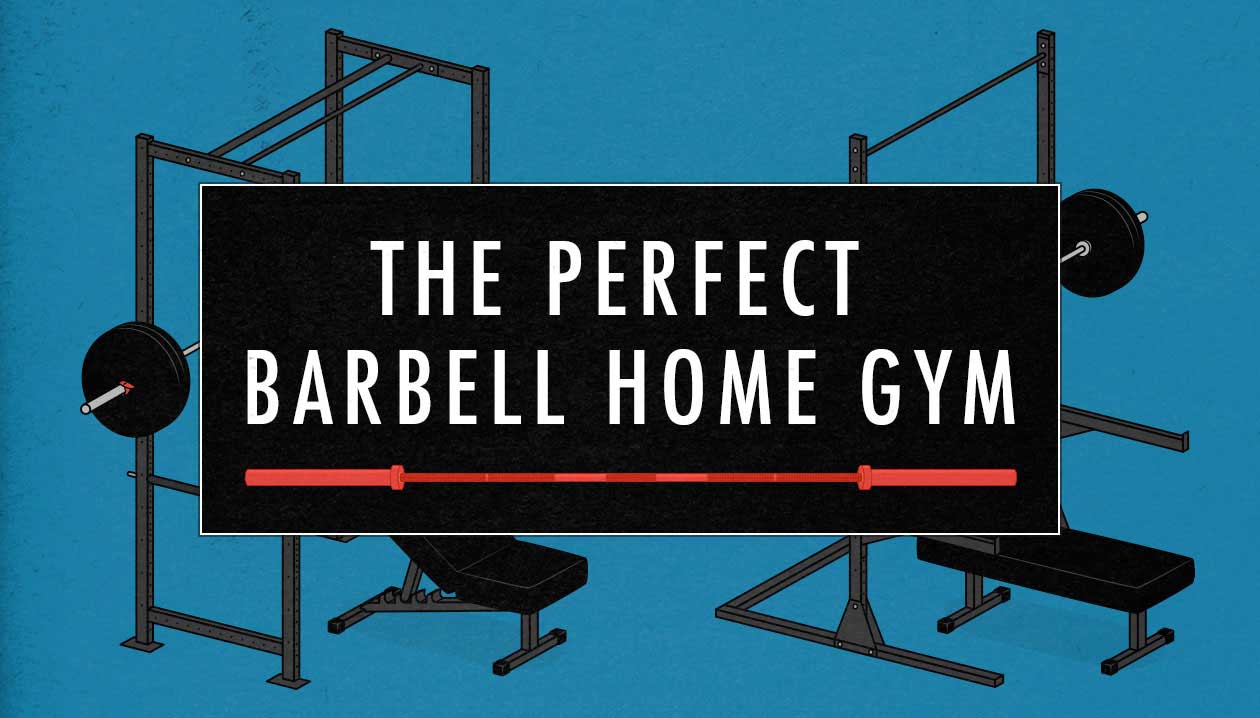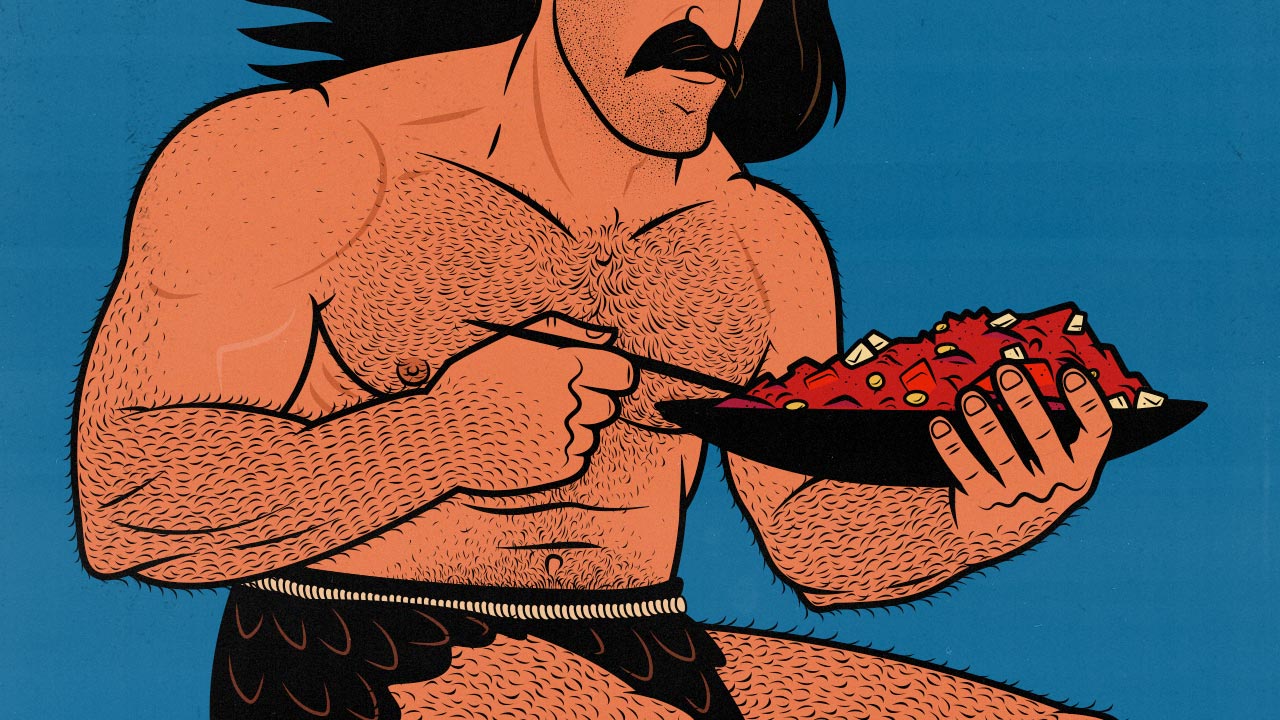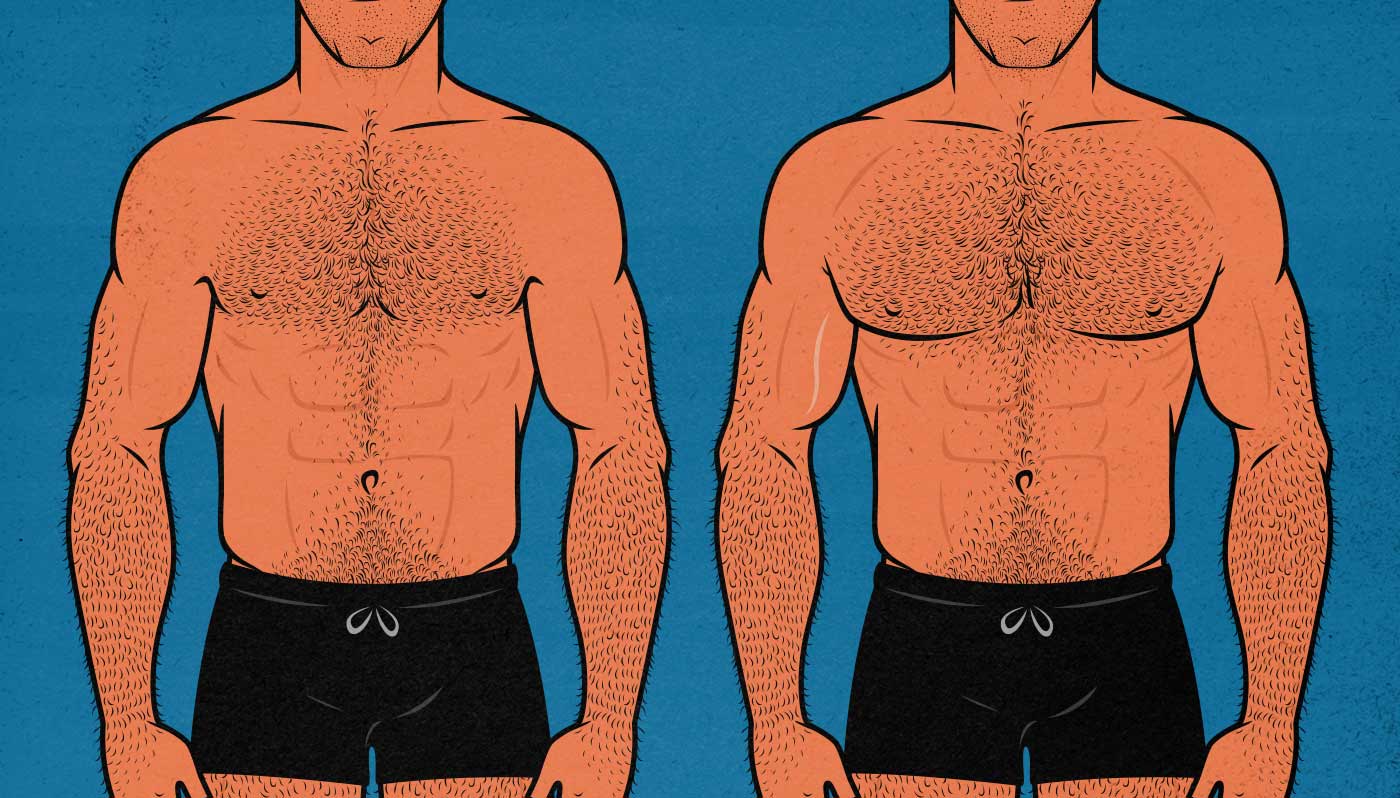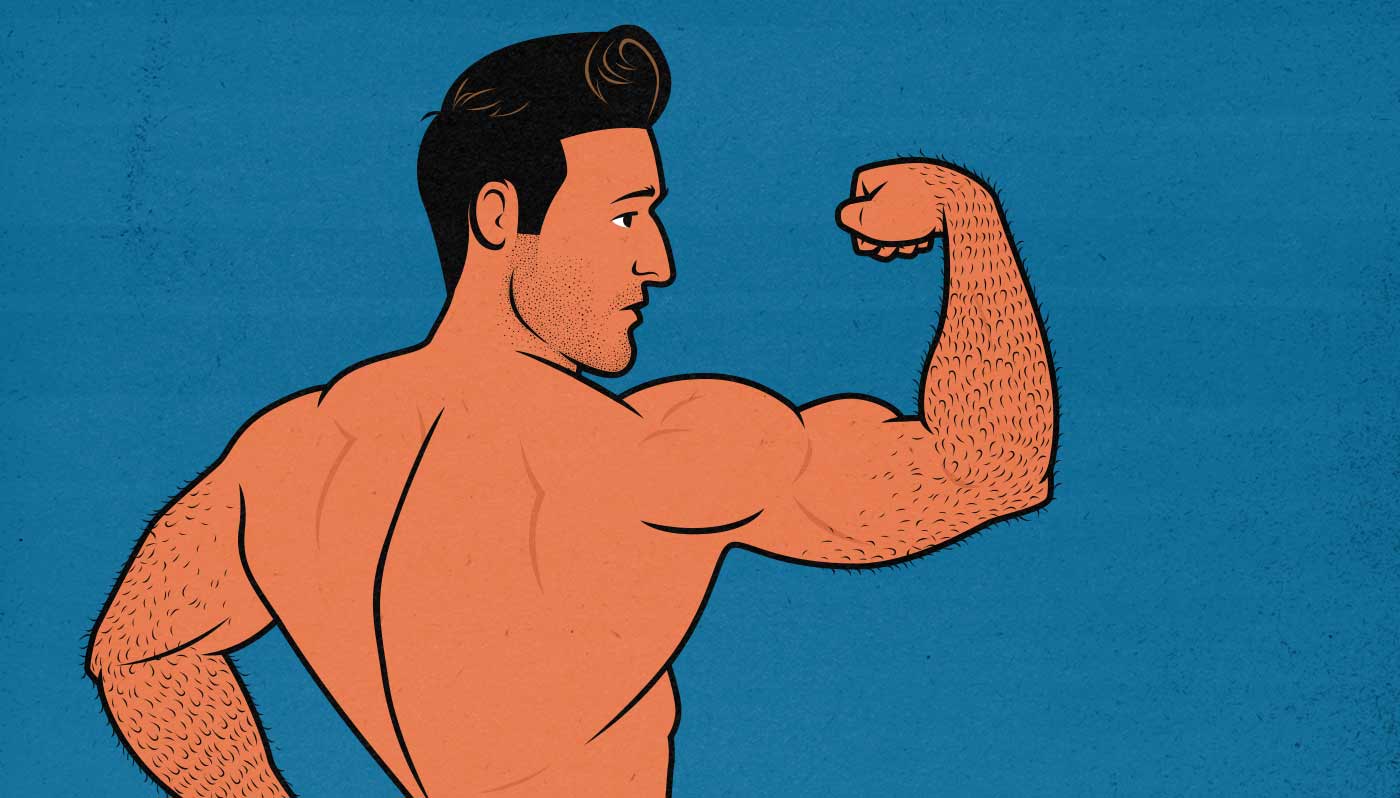Posts by Marco Walker-Ng, BHSc, PTS
How Many Carbs Should You Eat to Build Muscle?
Bodybuilders traditionally eat high-carb diets while bulking, getting anywhere from 50–60% of their calories from carbohydrates. Carbs are a great source of calories, they can be relatively easy to digest, they’re rich in nutrients, and they’re fantastic for building muscle.
In this article, we’ll talk about the benefits and downsides of eating so many carbs, cover the latest research, and then give you some modern recommendations.
Delve DeeperAre You Lean Enough to Bulk?
Let’s say you’re a skinny guy eager to build muscle. But you aren’t lean. You don’t have much muscle definition. No abs. Maybe you’re even “skinny-fat.” Are you lean enough to bulk? After all, even if you do a lean bulk, you may still gain some fat. That can be stressful if you’re already feeling too soft.
Plus, many bodybuilders believe that when your body-fat percentage gets too high, it interferes with bulking. Testosterone converts into estrogen, insulin sensitivity crashes, it gets harder to build muscle, and you gain proportionally more fat. Is any of that true?
How can you know if you’re lean enough to bulk?
Read MoreAre Pre-Workout Supplements Good for Building Muscle?
We’ve seen some heated discussions about ingredients and dosages founds in pre-workout supplements. Does this particular brand have at least six grams of citrulline malate? Is it the correct ratio of citrulline to malate? Is there theanine alongside the caffeine to blunt the jitters? Are they using proprietary blends to hide subpar dosing? Unless you’re super into supplement research, it can be hard to parse.
But the more important question is, will taking a pre-workout supplement actually help you build muscle? Instead of diving right into min-maxing the ingredients and dosages, maybe we should take a step back and see if pre-workout supplements even work.
Read MoreAre You a Non-Responder to Weight Training?
There’s no doubt that genetics play a role in building muscle. In fact, especially when looking at outliers, genetics can have an enormous impact. If two people do the same workout routine and eat the same bulking diet, one of those people might gain twice as much muscle.
What’s more contentious is the claim that some people can’t build muscle at all. And there’s some truth to that idea. When most people start lifting weights, they build muscle. But not everyone. And these people who don’t gain muscle have been referred to as “non-responders” or “low-responders” in the research.
So what’s going on here? Weight training is supposed to cause us to adapt by gaining muscle size and strength. Why do some people fail to adapt?
Read MoreShould You Build A Dumbbell or Barbell Home Gym?
Let’s say you want to build muscle at home. You’ve got a few different options. You could use your body weight, but bodyweight workouts are painful and difficult. So maybe you decide to get some resistance bands, but they aren’t very good for building muscle. Exercise machines are good for building muscle, but you’d need a different machine for each lift, which is highly impractical. That’s why most people turn to weights: barbells and dumbbells.
Both barbells and dumbbells are great at stimulating muscle growth, both are reasonably affordable, and both can be used to do hundreds of different exercises, allowing you to follow a full hypertrophy training program. Still, barbells and dumbbells aren’t quite the same as one another.
Strength training is known for favouring barbells, bodybuilding is known for favouring dumbbells (and exercise machines). For building muscle, we want to use both strength training and bodybuilding lifts. We want to use aspects of both styles of training. So which should you choose? Barbells or dumbbells?
Let’s go over the pros and cons.
Read MoreThe Best Workout Splits for Gaining Muscle—Explained
A workout split refers to how you organize your exercises throughout the week. Should you do 2, 3, or 9 workouts? Should you stack all your chest exercises into one of those workouts, split them between two, or do a few sets every workout?
There are a few different workout splits, each of them good, but each with its own pros and cons:
- Body Part “Bro Split:” This split focuses on one body part per workout. Monday is Chest Day, Tuesday is Back Day, and so on. This type of split is incredibly popular with bodybuilders—and for good reason.
- Upper/Lower Split: This split severs your workouts into upper-body days and lower-body days. This split shifts more emphasis toward your lower body, making it great for gaining strength and athleticism. When Marco was helping professional and Olympic athletes bulk up, he had almost all of them on upper/lower splits.
- Push/Pull/Legs Split: This split organizes workouts by movement pattern. Pushing exercises work the triceps, chest, and shoulders. Pulling exercises target the back and biceps. Leg exercises focus on the entire lower body. It’s more logical than a Bro Split but also less clever and efficient.
- Full Body Split: You train your entire body every workout. It’s the most efficient way to train, allowing you to build a tremendous amount of muscle with just two or three workouts per week. I gained my first 50 pounds this way.
- Hybrid Splits: This split combines different ideas together. For example, maybe you add an upper/lower split to a push/pull/legs split, giving you a 5-day workout routine for gaining strength, athleticism, and muscle size. Or if your arms are lagging behind, you could add an Arm Day to your full-body routine.
Without further ado, let’s break all these splits down so you can find the one that’s best for you.
Read MoreHow to Build a Barbell Home Gym
Let’s say your goal is to build muscle, and you want to do it at home. If you don’t have a spare room or garage available, you can build a dumbbell home gym, and that’s great. But if you have room for it, a barbell home gym is the ideal way to train. You can do all of the best compound lifts, all of the best accessory lifts, and you can gradually add a little bit of weight to those lifts every workout. Not only that, but barbell training is by far the most efficient way to train. You’ll stimulate a ton of overall muscle mass with every repetition.
The problem is, building a barbell home gym can get confusing. I help people build muscle for a living and I still found it confusing. There are so many different brands, setups, and pieces of equipment. Even when picking a barbell, there are many different types, ranging from power to bars to weightlifting bars. And each type of barbell can have various coatings, ranging from zinc to cerakote.
So what we’ve done in this article is outline a basic setup that’s ideal for building muscle. Then we’ve recommended the best brands and pieces of equipment, going from the most affordable options to the best quality options. I’ll also show you my own barbell home gym and give you links to each piece of equipment I bought.
Read MoreThe Best Macros for Bulking: How Much Protein, Carbs & Fat to Eat
When figuring out our ideal bulking macros—how much protein, carbs, and fat we should eat—there are a few things we need to consider. First, we can look at the research to see which macros allow us to build muscle the fastest. Second, we can see which macros help us avoid gaining fat while bulking. Third, we can look at which macros make it easier to get into a sustainable calorie surplus.
But a lot of us care about more than merely building muscle. We also want to improve our general health as we do it. So we can also look at which macros have the best impact on our health as we bulk up.
So, what are the best macros for bulking?
Read MoreHow to Build a Bigger Chest (Even If It’s Lagging Behind)
The chest is one of the biggest and most powerful muscles in our bodies, but it’s also notoriously difficult to grow, and many people find that it lags. In fact, if you’re a naturally skinny guy with narrow shoulders or a shallow ribcage, building a bigger chest may seem downright impossible. I’ve been there.
There are three principles that reliably improve chest growth:
- Choose exercises where your chest is the limiting factor, ensuring that it gets most of the growth stimulus. And if your upper chest is lagging, the same rule applies: choose lifts where your upper chest is the limiting factor.
- Challenge your chest under a deep stretch, improving how much muscle growth you stimulate with every set. As we’ll cover below, this can double your rate of muscle growth.
- Make sure that you’re achieving progressive overload, getting stronger over time, gradually lifting more weight or doing more repetitions. This includes eating enough protein and calories to recover and grow from your workouts.
If you can get stronger at lifts that are limited by the strength of your chest, then your chest will grow. And if those lifts challenge your chest under a deep stretch, it will grow much faster.
So, which lifts are best at challenging our chests through a deep range of motion? And how can we make sure that our chests are the limiting factor? Let’s dive in.
Dive InForearm Training: How to Build Bigger Forearms
When you first start lifting weights, it’s a good idea to focus most of your energy on the big compound lifts. Your workouts start with lifts like the squat, bench press, deadlift, chin-up, and row. These are the biggest lifts that build the most overall muscle mass. After that, we add in some isolation lifts. Curls for our biceps, extensions for our triceps, lateral raises for our shoulders, and maybe some exercises for our abs. These train the muscles that aren’t properly stimulated by the big compound lifts.
As you gain weight, build muscle, and get stronger at these lifts, you’ll probably notice that your grip is getting stronger, and your forearms are getting bigger. This is because the rows are training your elbow flexors, the biceps curls are training your wrist flexors, and the lateral raises are training your wrist extensors. They aren’t the main muscles being worked, but since we’re new to lifting weights, they grow.
The thing is, as you continue getting bigger and stronger, you’ll probably notice that your forearms stop growing. That’s because your forearm muscles have gotten both stronger and tougher, and these compound lifts aren’t challenging them enough to provoke any growth.
So how do we get bigger forearms? We train them directly. Here’s how.
Read More
